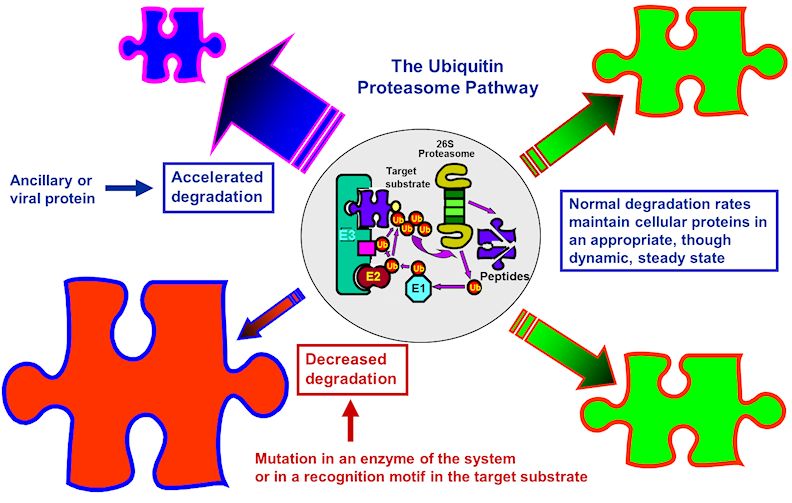
Figure 8.
Aberrations in the ubiquitin-proteasome system and pathogenesis of human diseases.
Normal degradation of cellular proteins maintains them in a steady-state level, though this level may change under various pathophysiological conditions (upper and lower right side). When degradation is accelerated due an increase in the level of an E3 (Skp2 in the case of p27, for example), or overexpression of an ancillary protein that generates a complex with the protein substrate and targets it for degradation (the human papillomavirus E6 oncoprotein that associates with p53 and targets it for degradation by the E6-AP ligase, or the cytomegalovirus-encoded ER proteins US2 and US11 that target MHC class I molecules for ERAD), the steady-state level of the protein decreases (upper left side). A mutation in a ubiquitin ligase (such as occurs in adenomatous polyposis coli (APC), or in E6-AP (Angelmans’ syndrome)) or in the substrate’s recognition motif (such as occurs in β-catenin or in ENaC) will result in decreased degradation and accumulation of the target substrate.